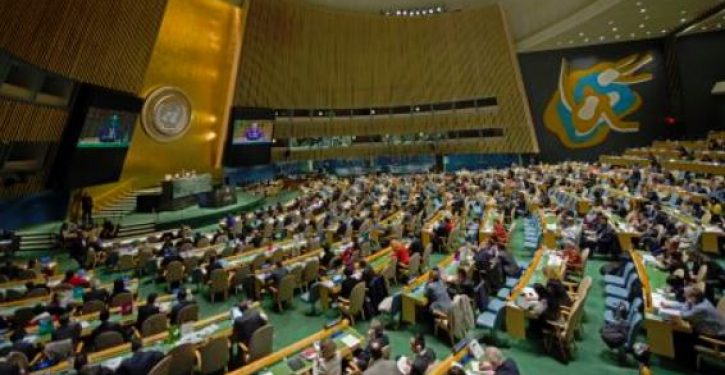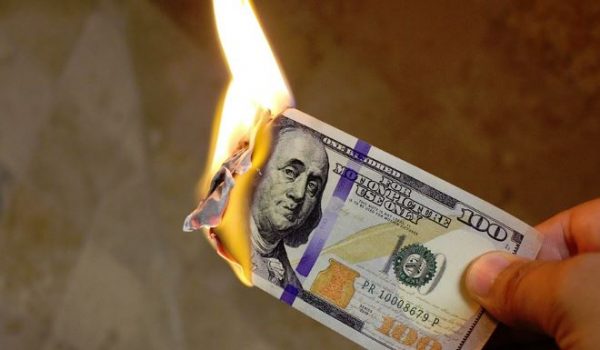
What’s the latest crisis? Nothing new, actually; it’s been around so long that it can’t meaningfully be called a crisis. But that doesn’t deter one UN agency from considering it one anyway. I refer of course to the issue of domestic violence against women and girls. UN Women proclaims,
Violence against women and girls remains the most pervasive human rights violation around the world.
Hmm. That’s a dubious claim for a number of reasons, mostly that, globally, far more men and boys are victims of violence, in war, crime and elsewhere, than are women and girls.
But there’s a more important issue than UN Women’s dicey claims. Worldwide, we’ve spent hundreds of billions of dollars over 50 years on the issue of DV, but the problem, according to UN Women itself, remains massive and intractable. So, doesn’t that raise obvious questions? Shouldn’t we finally draw the conclusion that half a century of admitted failure is enough? We’ve given the gender ideologues their shot, so shouldn’t we try something else? And, since we have a good idea of what works, shouldn’t we try it?
UN Women’s take on the issue reflects that of DV ideologues worldwide – DV is a “gendered” phenomenon – which is code for “men are perpetrators and women victims.” That’s why the UN has no parallel site for male victims of DV, no “16 Days Against Violence” on behalf of men and boys. It has no such thing because those who’ve always controlled the narrative on DV bank huge sums of money running anti-DV programs while refusing to admit even basic facts about inter-partner violence.
That of course is why our 50-year effort to address the problem has only perpetuated it. It turns out that ignoring the facts of DV is a lousy way to make sound, effective policy to lessen its frequency. Indeed, making policy based on political ideology, rather than facts and known science, leads only to sinecures in the DV industry and year after year of virtue signaling like “16 Days of Activism Against Gendered Violence.”
Meanwhile, around the world, men and women, boys and girls continue to suffer violence at the hands of their significant others.
The simple fact is that the ideology-based take on DV prevents the provision of services to male victims and female perpetrators of inter-partner violence. Just try to find a shelter for men and boys (there are just three in the U.S.) or anyone who’s willing to treat a female abuser who wants to change her ways. Both are scarce as hen’s teeth, but without them, we have not a prayer of addressing a problem that we could mostly solve if we abandoned the gender hatred that informs the current system.
That would begin with constructive counselling for couples who physically abuse each other. Domestic violence is behavior that’s usually learned in childhood. Kids who are hit by their parents tend to become adults who hit each other and their own kids. A bit of cognitive therapy can change that, but the DV industry would rather open a vein than abandon their objectively false theory that DV results solely from a patriarchy bent on male power and control over women. Here’s what veteran DV researchers, Elizabeth Bates, Nicola Graham-Kevan and John Archer had to say in their 2013 study:
Contrary to the male control theory, women were found to be more physically aggressive to their partners than men were, and the reverse pattern was found for aggression to same-sex non-intimates… Overall, these results do not support the male control theory of IPV.
Given that, plus almost 50 years of evidence that women abuse their male partners at least as often as vice versa, it’s hard to make the case that the DV industry’s approach to the problem doesn’t need to be entirely refigured.
Interestingly, UN Women’s own data support that conclusion.
Less than 40 per cent of women who experience violence seek help of any sort.
In places like the U.S. and Canada, that’s not only true, it’s an understatement. For example, the Canadian statistical agency that gathers information on DV found in 2015 that only 19% of Canadians who said they’d experienced DV in the previous year reported the matter to authorities. Why? Generally, they thought the incident in question didn’t merit involvement by police and courts, i.e., the “solution” favored by the DV industry.
In other words, over 80% of people involved in a DV incident chose not to insert themselves into the system created by the DV industry. They’re not buying what the ideologues are selling because the detriments of doing so – Dad removed from the home, the kids deprived of their father, expenses for legal representation, rent for a new place for him to live, a black mark on his police record, etc. – outweigh the benefits, if any. In a sane world, that alone would demand reform of a system so widely rejected by the very people it’s supposedly designed to assist.
But no. To the DV industry, constructive reform is a patriarchal plot that threatens its ideology which is more important than any solution to domestic violence.
Unlike our current system, one that would de-emphasize the police, courts and criminal law and channel both victims and perpetrators into programs designed to help them change their ways would attract far more clients, cost less and maintain intact families that want to remain that way. More importantly, it would reduce the incidence of domestic violence both now and long into the future as fewer children would grow up in abusive homes.
It’s the one thing that holds the possibility of working and, notably, the one thing the UN Women’s site never mentions and probably never will. After all, doing so might mean an end to the permanent “crisis,” the very last thing DV ideologues want.
This article originally appeared at The Word of Damocles.


